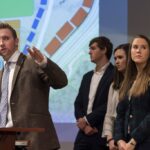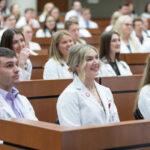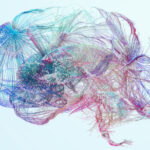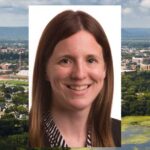UW-Madison
-
Wisconsin Real Estate Program to add new graduate track in affordable housing and sustainable development

October 5, 2023
This innovative new track responds to student and market demand A new graduate-level offering from the Wisconsin School of Business will meet demand for two of the fastest-growing topics in real estate: housing affordability and sustainability. Debuting in Fall 2024, the Department of Real Estate and Urban Land Economics’ 12-credit affordable housing and sustainable development track […]
-
UW–Madison launches PharmD Early Assurance, opening door for more Wisconsin pharmacists

September 28, 2023
The University of Wisconsin–Madison School of Pharmacy is introducing a new program that aims to increase access to pharmacy school and train more pharmacists to help meet the health care needs of Wisconsin. The PharmD Early Assurance program provides conditional admission to the UW–Madison Doctor of Pharmacy (PharmD) program for high school seniors who want to become […]
-
UW-Madison: Cancer diagnosis and treatment could get a boost from machine learning

August 30, 2023
Thanks to machine learning algorithms, short pieces of DNA floating in the bloodstream of cancer patients can help doctors diagnose specific types of cancer and choose the most effective treatment for a patient. The new analysis technique, created by University of Wisconsin–Madison researchers and published recently in Annals of Oncology, is compatible with “liquid biopsy” testing equipment […]
-
UW-Madison water resources students get hands-on experience with creek cleanup

August 4, 2023
Determined to remove a log from a large pile, several Nelson Institute Water Resources Management students leaned into their ropes in a field at Badger Farms. “You don’t think that just tying a rope around the log and yanking on it is going to do much, especially for me that’s barely over five feet tall,” […]
-
Archaeologists uncover evidence of intentional burial, cave engravings by early human ancestor

July 24, 2023
New observations and excavations in South African caves have found that Homo naledi, an early human ancestor, intentionally buried their dead and made crosshatch engravings in the cave walls nearby. Fossils of Homo naledi were first discovered in these caves 10 years ago by a team of researchers led by paleoanthropologist Lee Berger, now a National Geographic Explorer in […]
-
UW Center for Healthy Minds will research machine learning predictions of well-being

July 13, 2023
High rates of depression, anxiety, loneliness and lack of purpose are taking a toll on Americans’ mental and physical health, with wide-ranging negative consequences. Unfortunately, many of those most in need of mental health services are unable to access them through traditional means. Researchers at the University of Wisconsin–Madison’s Center for Healthy Minds are working […]
-
The right focus: Colleen McDowell is a leader in glaucoma research

July 10, 2023
The world is coming into much better focus thanks to the research of Colleen McDowell. Since leaving UW-La Crosse with a bachelor’s in biochemistry and microbiology in 2004, McDowell has become a highly regarded thought-leader in the field of glaucoma research. “Her research has substantial implications for the current and future treatment of glaucoma as […]
-
Badgers win national debate championship

May 19, 2023
You don’t hear “Jump Around” blasted at many debate tournaments. That changed when a team of Badgers won the national championship at the annual Yaatly Online Debating League in Denver on April 8-9, setting off a raucous celebration from the UW–Madison contingent, including the song best known for rocking Camp Randall Stadium during football games. Six […]
-
Cecil Garvin, esteemed teacher of Ho-Chunk language, to receive honorary degree from UW–Madison

April 27, 2023
The University of Wisconsin–Madison will award an honorary doctorate degree this May to Cecil Garvin, a highly respected Ho-Chunk elder who has devoted much of his professional life to the preservation and promotion of the Ho-Chunk language and culture. Garvin is a primary author of many of the language materials presently used in K-12 education […]
-
From concussions to PFAS: Five ways UW-Madison research is tackling real-world problems

April 6, 2023
Scientific research can feel distant from our everyday lives, and indeed it often requires years — or decades — of intense study to bring a life-saving medical treatment or useful new technology to fruition. Even in the face of daunting challenges and long timelines, researchers at the University of Wisconsin–Madison bring their love for learning […]
